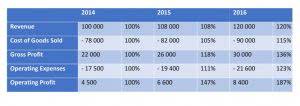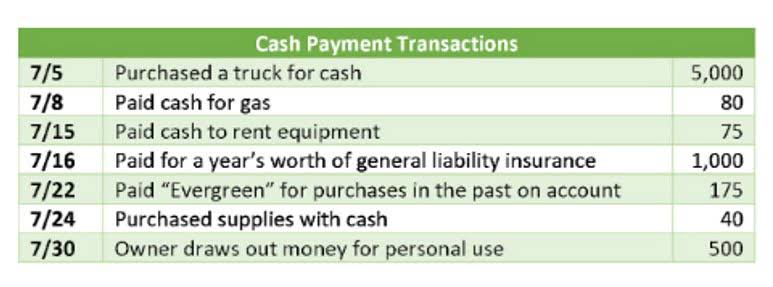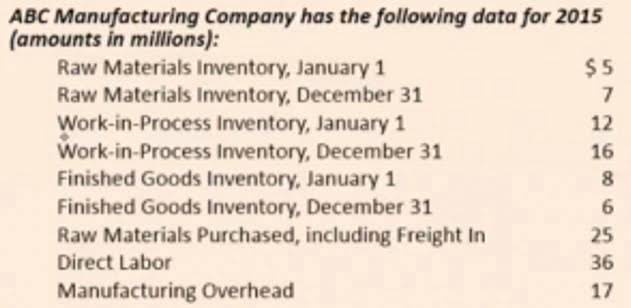You can learn from live and self-paced classes that fit any schedule. You get all 3 QuickBooks certification exams ($390 value), and we’ll help you ace the exams with QuickBooks classes, hands-on exercises, and sample tests. If you’re like many busy business owners, you can’t spend hours learning the vip quickbooks training detailed ins and outs of bookkeeping. QuickBooks Online users can save time with experts who can help them streamline workflows and take care of tedious bookkeeping tasks. Coursera is an online platform that offers courses by top instructors from world-class universities and companies.
The Knowledge Academy
Just join our Live Help room, share your screen, and we’ll give you step-by-step instructions to fix YOUR books. Annual recertification allows you to keep your certified status and continue earning ProAdvisor rewards, while staying up to date with new QuickBooks features and workflows. Terms, conditions, pricing, special features, and service and support options subject to change without notice.
QuickBooks Training class Knoxville
But you’ll keep your self-paced classes FOREVER (including all future updates). If you cancel your membership after 30 days, you’ll lose access to QuickBooks Live Help. But you’ll keep all your QuickBooks courses FOREVER (including all future updates). If you buy the Certification or Team plan, you also receive 3 QuickBooks exams ($390 value) for each user. Refunds and certification examsIf you refund your purchase, you can no longer sign up for more of the included certification exams.
Contact us today to learn how tailored support can make a difference for your company. Priority Circle is available to customers using QuickBooks Enterprise or QuickBooks Online Advanced. Eligibility may also depend on specific subscription plans or purchase history. We provide QuickBooks Online certification (QBO certification), and we help you ace the exam with QuickBooks Online certification (QBO certification) prep courses. You get the QuickBooks Online certification (QBO certification) exam for FREE ($130 value).
- But you’ll keep all your QuickBooks courses FOREVER (including all future updates).
- It includes self-paced training resources and other tools to enhance your QuickBooks experience.
- In fact, as a VIP member, you’re eligible for 5 vouchers ($780 value) to use for other employees or to get certified as a QuickBooks Online user, QuickBooks Desktop User, AND Bookkeeping Professional.
- You can learn from live and self-paced classes that fit any schedule.
Complete Training and Live Help MembershipTo refund your membership, email email protected before the 30th day of purchase, and you’ll receive a full refund. Please note, if you take any of the included certification exams, we’ll deduct the cost of the exams from your refund. If you cancel after 30 days, we’ll stop your monthly subscription for live services (this includes daily instructor-led classes and Live QuickBooks Help). You’ll still retain access to the entire self-paced library (including all future updates). If you cancel your membership after 30 days, you’ll lose access to the live 2-day QuickBooks class, live mini-classes, and Live Help.
- Learn how to optimize QuickBooks to deliver powerful accounting workflows with hands-on, media-rich certifications—all in our ProAdvisor Academy.
- Access engaging courses, tools, and tutorials through an easy-to-search learning library.
- Coursera’s bookkeeping courses cover a range of topics, including financial accounting, managerial accounting, and financial statement analysis.
- Explore full courses, topics and chapters to get the answers you need quickly.
Both program options are available for less than $1,000. Bookkeepers and accountants can get QuickBooks Certified at the end of their training and examination. QuickBooks offers online training courses about its software and bookkeeping basics. QuickBooks Training offers two comprehensive programs to help users feel confident when using QuickBooks software in as little as two days. Our Certification and Team plans include FREE QuickBooks certification, and you can take the test from the comfort of your home!
Who is eligible for Priority Circle?
These tests are offered at Universities and technical schools but cost $156 for individuals to take. In fact, as a VIP member, you’re eligible for 5 vouchers ($780 value) to use for other employees or to get certified as a QuickBooks Online user, QuickBooks Desktop User, AND Bookkeeping Professional. Get a free priority listing on our Find-a-ProAdvisor online directory, showcasing your skills and services to a vast range of potential new clients. Learn from your ProAdvisor peers how to leverage your accounting expertise to deliver valuable advisory insights to your clients. QuickBooks Live Expert Assisted is an affordable way to stay on top of your business’s books. Your access to live bookkeepers means you get personalized answers, all within your best-in-class financial software.
Refund and cancellation policies
If you’re new to the profession, understanding what a bookkeeper does can help clarify whether this career path is right for you. Dive into training resources and certification exams right from the ProAdvisor tab of QuickBooks Online Accountant. Priority Circle offers 24/7 access to top QuickBooks technical support agents, ensuring fast resolutions to your queries. Enjoy callbacks, screen sharing, and expert guidance to minimize downtime and maximize productivity.
Intuit, the company that created QuickBooks, offers bookkeeper certifications through Coursera. You can enroll for the Intuit Academy Bookkeeping Professional Certificate to get 65 hours’ worth of training and a credential to show for your work. By signing up for QuickBooks Online Accountant, you automatically unlock ProAdvisor benefits to help you land ideal clients, learn new skills, and get premier product support. Accelerate your professional development with actionable, live trainings taught by Advanced Certified ProAdvisors. Earn CPE credits and learn however you like—from webinars to virtual conferences to in-person events.
Explore full courses, topics and chapters to get the answers you need quickly. Benefits include faster resolution times, dedicated account managers, advanced training resources valued at up to $3,000, and comprehensive onboarding support, ensuring you maximize your QuickBooks usage. When customers no longer have an active, paid subscription, they will not be eligible to receive benefits. Many of our live QuickBooks courses have hands-on exercises so you can work along with the instructor. Most of the time, your instructor shares their screen and uses QuickBooks to guide you through everything you need to use QuickBooks effectively.
You get the QuickBooks bookkeeping certification exam for FREE ($130 value). You’ll receive hands-on exercises so you can get real experience using QuickBooks. Then, check your knowledge with our interactive sample tests to practice for the exam. Priority Circle makes it easier and more convenient for you to hone your QuickBooks skills with on-demand access to self-paced, online training courses – valued at $3,000.
Learn how to optimize QuickBooks to deliver powerful accounting workflows with hands-on, media-rich certifications—all in our ProAdvisor Academy. Build your foundational knowledge of accounting principles with our bookkeeping program to help launch your career. Access engaging courses, tools, and tutorials through an easy-to-search learning library. You can enroll for free in many of CFI’s courses to complete the trainings. If you want a certification for your work, you need to purchase an annual CFI membership.
After Class Feedback
Get reliable support when needed to stay focused on your work. QuickBooks Priority Circle is an exclusive program designed for QuickBooks Customers, providing 24/7 premium support and expert services. With personalized attention, dedicated account management, and a team of QuickBooks experts, Priority Circle ensures your business achieves maximum efficiency and growth. With over 30,000 courses across 190 countries, The Knowledge Academy is one of the world’s largest providers of training courses globally.
If you’re certified, you’re better positioned to apply as a highly qualified job candidate who can validate your QuickBooks knowledge and skills. And with our Live QuickBooks Help, you can get the assistance you need to learn as you work. You’ll love our QuickBooks training and Live Help for QuickBooks. If you’re not satisfied, just contact us within 30 days for a refund. You can view any QuickBooks course or QuickBooks class on any device with an internet connection. You’ll share your screen with an instructor and use your own QuickBooks during your session.
If you’ve already registered for an exam or taken an exam before you request a refund, we will deduct the cost of the exam from your refund. PLUS you receive 5 vouchers (a $780 value) so you can get certified in QuickBooks Desktop, QuickBooks Online and bookkeeping…or certify multiple people in your organization. QuickBooks Training offers a two-day live online class with an expert instructor as well as a VIP membership with more than 200 hours of training.
Weekly live training sessions (webinars)Attend a live 1.5 hour webinar every week to stay up to date on the latest changes or to dive deep into a specific subject. And if you can’t attend, you can always watch a recording of past webinars. Topics include QuickBooks Tips & Tricks, Customizing QuickBooks, Payroll topics, Sales Taxes, Avoiding Fraud, and much more.






